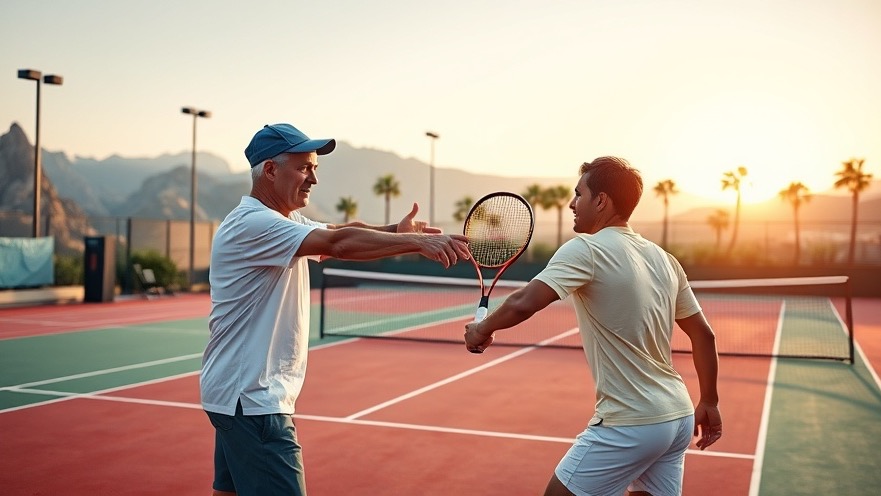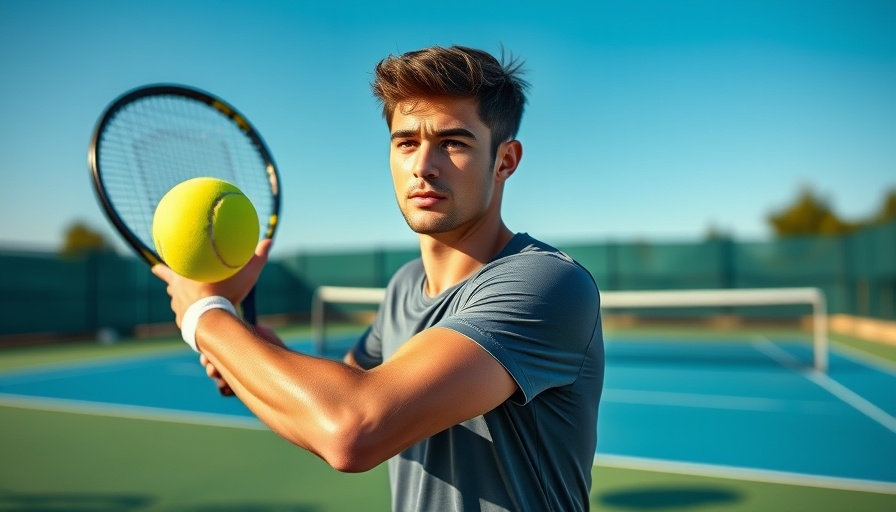
Understanding Forehand Technique: The Key to Improvement
In the fascinating world of tennis, the forehand is often considered one of the most iconic shots a player can master. Drawing insights from the video titled How Good Can Her Forehand Get With One Lesson?, we learn that the foundation of a great forehand extends beyond mere technique; it's about understanding the game dynamically. Elite players often encounter moments of pressure where they forget the basics that ensure their success. A simple yet profound tip shared by the coach is to always keep the ball over the net. This principle, though seemingly basic, is crucial for maintaining your rallies and reducing unforced errors.
In the video titled 'How Good Can Her Forehand Get With One Lesson?', the discussion delves into mastering tennis techniques while exploring key insights that inspire us to analyze the dynamic between physical conditioning and gameplay.
Physical Fitness and Tactical Awareness: Integral Components of Tennis
As noted in the coaching session, being out of breath demonstrates a gap between physical conditioning and match readiness. It's vital to not only focus on technique but also develop 'court shape'—a specific type of fitness that enhances performance on the court. The interaction between breath control and consistent play is a reflection of how physical fitness directly influences skill execution. To push opponents back and capitalize on forehand attacks, physical conditioning allows players to sustain longer rallies without faltering. The coach emphasizes rallying as a crucial practice technique that directly dovetails with fitness. The longer a rally lasts, the more comfortable a player becomes, thereby reinforcing gameplay technique.
Navigating the Mind Game: Confidence vs. Control
A recurring theme throughout the lesson is the need to release control—both physically and mentally. The discussion around wrist tension when gripping the racket reveals how tightness can hinder performance. As highlighted, the tight grip results in a block that diminishes the ability to apply spin and control depth on shots. By allowing oneself to miss and focusing on fluidity rather than control, players liberate their forehand and allow natural talent to emerge. This nuanced approach encourages players to embrace their unique styles while continuously refining their skills without excessive pressure.
The Role of Natural Technique in Learning
For those just starting in tennis, a crucial takeaway from the video is the importance of focusing on enjoyable play rather than getting lost in technical details. The coach plainly advises beginners to prioritize rallying over strict technique, which resonates with many players who often feel anxious about mastering complex strokes too soon. Natural learning processes often yield better results than rigidly adhering to learned techniques, as they enable players to develop authentic and effective movements spontaneously.
Looking Ahead: Continuous Growth as a Tennis Player
The journey of improvement in tennis is both challenging and rewarding. Techniques are continually refined, but underlying principles remain constant. Whether it's focusing on court shape, embracing a relaxed grip, or finding joy in the game, understanding these concepts allows players to push their limits. Aspiring players should embrace trials and mistakes as they work toward mastering their forehand or any aspect of their game.
 Add Row
Add Row  Add
Add 




Write A Comment